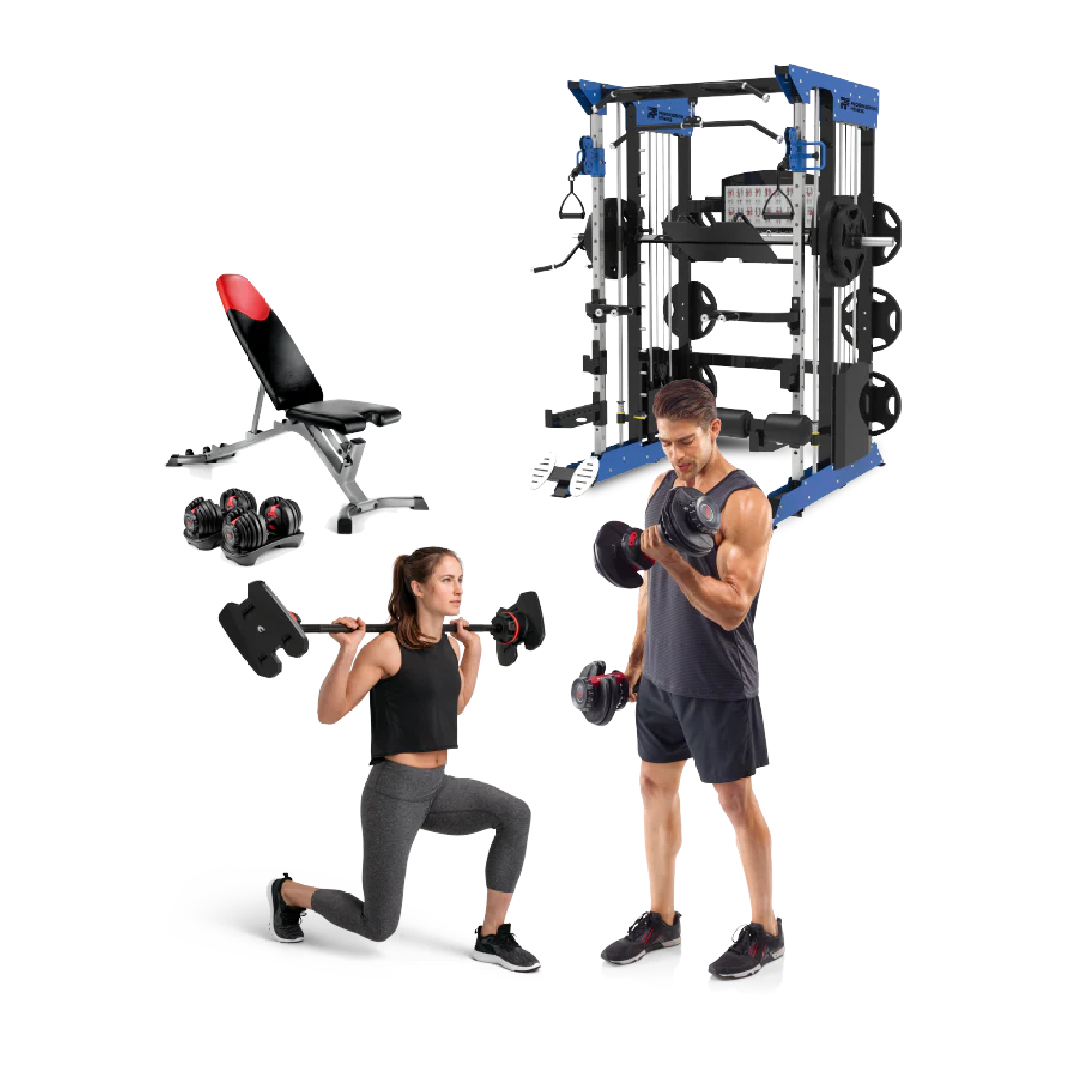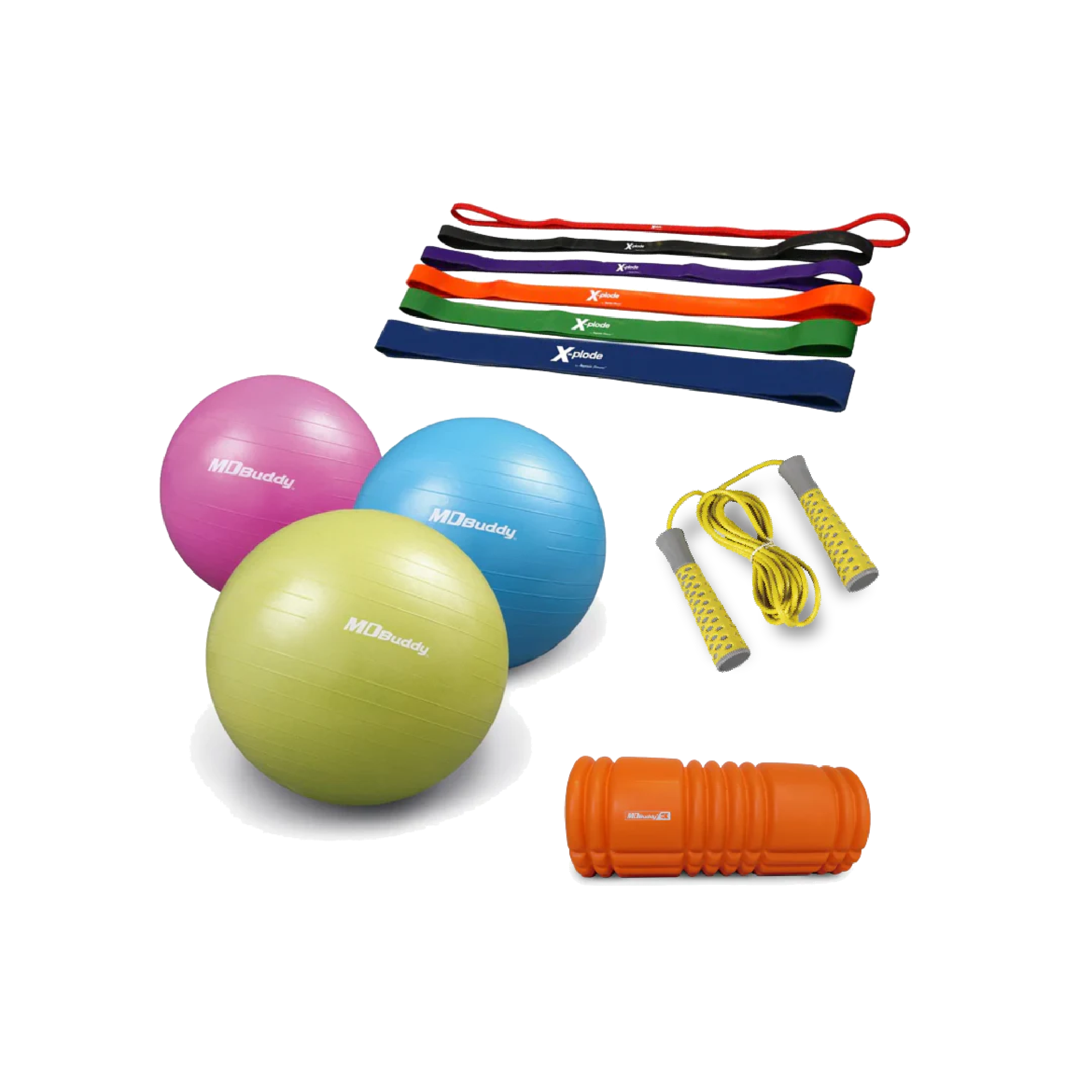The Flaman Fitness Guide to Finding YOUR Ideal Exercise Bike
At one time, it was thought that using stationary bikes could yield only embarrassingly out-of-proportion leg muscles. However, both indoor and outdoor cycling have proven effective in engaging and strengthening your back, arms, core and other upper-body muscles along with your quads, hamstrings, glutes, and calves. Meanwhile, research shows stationary bikes can burn an average of 400-600 calories (and up to 900) in a 40-minute workout. That’s before the increased lung capacity, muscle tone and cardio endurance.
Then there’s what a home exercise bike won’t do to you. Lessening the jolt on your joints has always given pedaling the edge over running – and over outdoor cycling with its sometimes-bumpy terrain. Outdoor cycling also occasionally threatens sudden weather changes and frightening traffic situations. At home, you’re not surrounded by hard-core gym-goers, making you feel self-conscious and hesitant to try new things. Of course, contagion is top of mind these days, so having a bike you own and clean yourself can alleviate that worry. Last but not least, it’s there whenever you want to exercise – no waiting or sign up sheets. However, gyms do offer you the opportunity to get off one bike that isn’t working for you to try another until you find the one that’s perfect for you.
The good news is you can find that same perfect bike, bring it home, and start exercising your way on your schedule with your results in mind. Sure, there’s a lot to choose from these days. But if you consider a few fundamental factors, you’ll save a ton of time, money and confusion getting exactly what you need.
Make a list of things to consider.
The first thing you’ll need to nail down is your exercise goals. Are you trying to lose weight? Build endurance and cardio fitness? Tone your body? A little of each? Understanding what you want to achieve and what kind of exercise you’ll need to do (such as high-intensity training [HIIT] or more prolonged, moderate aerobic training) is a good starting point. Consider your time commitment – not just how long your workouts will take but also how often you’ll need/be able to do them.
Be realistic. Imagining great things in a short time can quickly scuttle your progress – especially if you opt to push yourself too hard on a bike made for elite athletes. That frustration can be compounded if you’ve spent a lot on it. You might have to adopt the “Rome wasn’t built in a day” outlook. Building up in terms of time commitment, effort and the bike you ride on. Think about what you need right now and what you’ll need down the long road to your goals. Perhaps a less expensive “starter” bike will get you going for now, and you can upgrade later. Then again, manufacturers know their audiences very well and have designed several great bikes with beginner-to-elite user progress in mind.
Know yourself, your capabilities and your requirements.
"Young woman having her blood pressure taken" by SELF Magazine is licensed under CC BY 2.0
You’ll need to consider basics like your height, weight, athletic ability level, and physical limitations. Talk to your doctor and get an accurate measure of what your heart, lungs, arms, legs and joints can handle. You don’t want to hurt or wear yourself out trying to become stronger and fitter. Doctors, trainers and other fitness experts can also make recommendations for physical disabilities. Once again, successful fitness equipment companies keep all users’ requirements in mind, so there are always options for your comfortable, productive exercise experience.Which kind of exercise bike is right for you?
The stationary bike has taken many forms throughout its evolution, but today they boil down to three basic types of bikes, each with its own pros and cons:
- Upright Bikes. The “upright” could be applied to both how these bikes are built and how you sit on them. With reasonably high handlebars and a wider, better-padded seat for added comfort, upright bikes have more of an old-time bike tour-in-the-country feel than spin bikes. However, that doesn’t mean they can’t challenge, motivate and invigorate you. Many, like the Xebex Fitness AirPlus, have great consoles continually monitoring your heart rate, calorie burn, distance, speed, and other pertinent workout info. You can also often connect to external programs and devices for motivating instruction or entertaining diversions. Upright bikes can be your most compact choice, although some models, especially those with fans, can be bulkier. As a bonus, upright bikes like the LifeCore Air Assault come with moving handles that allow you to get an upper-body workout in at the same time (you can also do this with free weights, but mind your balance).
- Spin Bikes. These bikes differ from upright bikes because they’re designed to better simulate the go-hard competitive outdoor biking experience. Models like the Schwinn IC4, Progression Fitness Pro Club 30, and Johnny G Spirit Bike are built more like Tour-de-France racing bikes with the handlebars lower than its narrow seat, forcing you to lean forward when you go for it. However, you can also stand on the pedals for high-intensity bursts. A racing posture isn’t great for everyone – especially those with bad backs. In short, it’s an advanced athlete’s bike. With lighter flywheels and consoles that stick mostly to high-intensity workout information, spin bikes are designed for quick expenditures of energy and users who are good at that sort of thing.
- Recumbent Bikes. Making exercise more relaxing might seem like a tall order, but the recumbent bike pulls it off. Premium recumbent bikes like the Nautilus R618 and the Spirit Fitness XBR95 share two unique features are pedals set out in front of you and a larger seat with a full padded backrest. Add freeing both hands for checking your messages (without having to worry about losing your balance), and you’ve come as close as you’ll ever get to burning calories and kicking back in a lawn chair at the same time. Of course, you give up some things to get this. Although the seat back keeps you sitting straight (it’s not a recliner), you’re still giving up the core-building benefit of maintaining your own posture. If you use a smart device, remember that taking your hands off heart rate sensors on the handlebars or sides of the seat deprives you of vital progress-tracking info (unless you have an external monitor). You may also tend to slow down when your mind’s distracted, adding even more time to your workout. But if you have the extra time, the recumbent bike is an excellent choice – especially if you’re just starting out or have back problems or other health issues.
Functionality
You need to ask two essential questions about your prospective bike: “Does it do everything I need it to?” and “Would I be paying for features I don’t need/won’t use?” Bells and whistles are great when you’re keeping meticulous track of your progress, helping keep you motivated.
- Features. These include Workout programs, resistance levels, computer-controlled magnetic resistance. Less expensive bikes start with basics like configurable workout resistance and a few programming options. You get more features as the price goes up. Higher-end bikes like the Nautilus U618 offer preset workout programs (often with video instruction), several resistance levels, user profiles, interactivity with other users, an accurate and detailed computer, and other advanced features - backed by longer-term warranties.
- Durability. Does the bike you’re eying have a heavy-duty flywheel like the 31-pounder of the Progression Fitness Club 40? How sturdy and stable is its frame? The more info you can get from the manufacturer – construction materials, the gauge (thickness) of frame steel, plus welds, nuts, bolts, chains, protective coating, etc. – the better. Your maximum user weight info tells you what a bike can take. So do user reviews and the length of your warranty.
- Tracking. Your LCD screen isn’t just pretty to look at. It’s vital to monitoring your progress. It instantly lets you know if your heart rate is in the cardio or fat-burning range, encouraging you over that next high-intensity hurdle, and inspiring you to keep working out with constant calorie burn updates. That is if you have heart rate monitoring included. It’s not standard with lower-cost bikes, but you can pick up your own separate heart monitor. More advanced (and expensive) bikes can turn your workout into a video game or a tour of an exotic locale. These aren’t necessary, but they can keep you motivated. Some bikes, like the Star Trac 4 Series, give you the option of powering your monitor by pedaling.
Personal Suitability
Really, this is THE deciding factor – whether a given bike is right for YOU. Once you’ve learned what you can about the criteria above, imagine yourself on the bikes you investigate and ask yourself how they’d rate in the following categories:
- Adjustability.If you’re a taller or shorter rider, the ability to adjust your seat and/or handlebars can make the difference between a refreshing workout and an embarrassing, potentially injurious ordeal. Most bikes allow you to set your seat and handlebar height, but models like the Nautilus U616 also provide forward, backward and tilt adjustments. You can also modify the exercises you do. Most adults don’t have to worry about their height changing, but your physical abilities definitely will (and for the better) if you keep working out regularly. It might be worth the money to find a bike that offers a wide range of resistance levels, which will keep your daily workouts challenging and support your long-term growth.
- Ergonomics. Picture yourself on one of your candidate bikes and consider the ergonomics. Are the pedals big enough for your feet? Are they or can they be set at a distance that isn’t an overlong reach but doesn’t make your knees feel cramped, either? Does it feature multiple hand-grip positions like the Schwinn Airdyne AD Pro? Is the seat the right size and adequately padded? Are handheld heart rate monitors in a comfortable place? These are essential questions when your legs are doing the work, your butt is taking the weight, and your hand position is governing your posture during a long workout.
- Creature Comforts. Extras like fans, built-in speakers, Bluetooth connectivity, and convenient spots for water bottles and smart devices might cost extra, but you might want to consider the possibility they’re worth it. Staying cool, hydrated, entertained and accessible to others aren’t ridiculous asks. Imagine the reasons you might want or even need these things, and consider whether you’d actually want to do without them. True, you could create your own substitutes, but be honest about how well those substitutes would work.
- Results. Being stationary won’t stop the right bike from taking you where you want to go. Once you’ve done your research, you can transcend the sales bumpf and imagery to envision how effectively a given bike will deliver improved strength, health, and muscle tone. Having a clearer idea of how well it will perform and how long it can last will help you decide if it’s the bike for you.
Talk to Flaman Fitness about your best bike buy!
Our stationary bicycle experts are ready to help you finalize your bike-buying decision. We offer a large selection of recumbent, upright and spin bikes from names like Schwinn, Nautilus, Xebex, Spirit, Inspire, Life Fitness, Star Trac, SportsArt, Universal and our own Progression Fitness brand. So there’s an excellent chance we can connect you with the bike of your dreams. Call or visit your nearest Flaman Fitness location to learn more.
Category: Your Fitness Resource
Tags:
bikes
buying guide
Equipment
filter_Equipment






